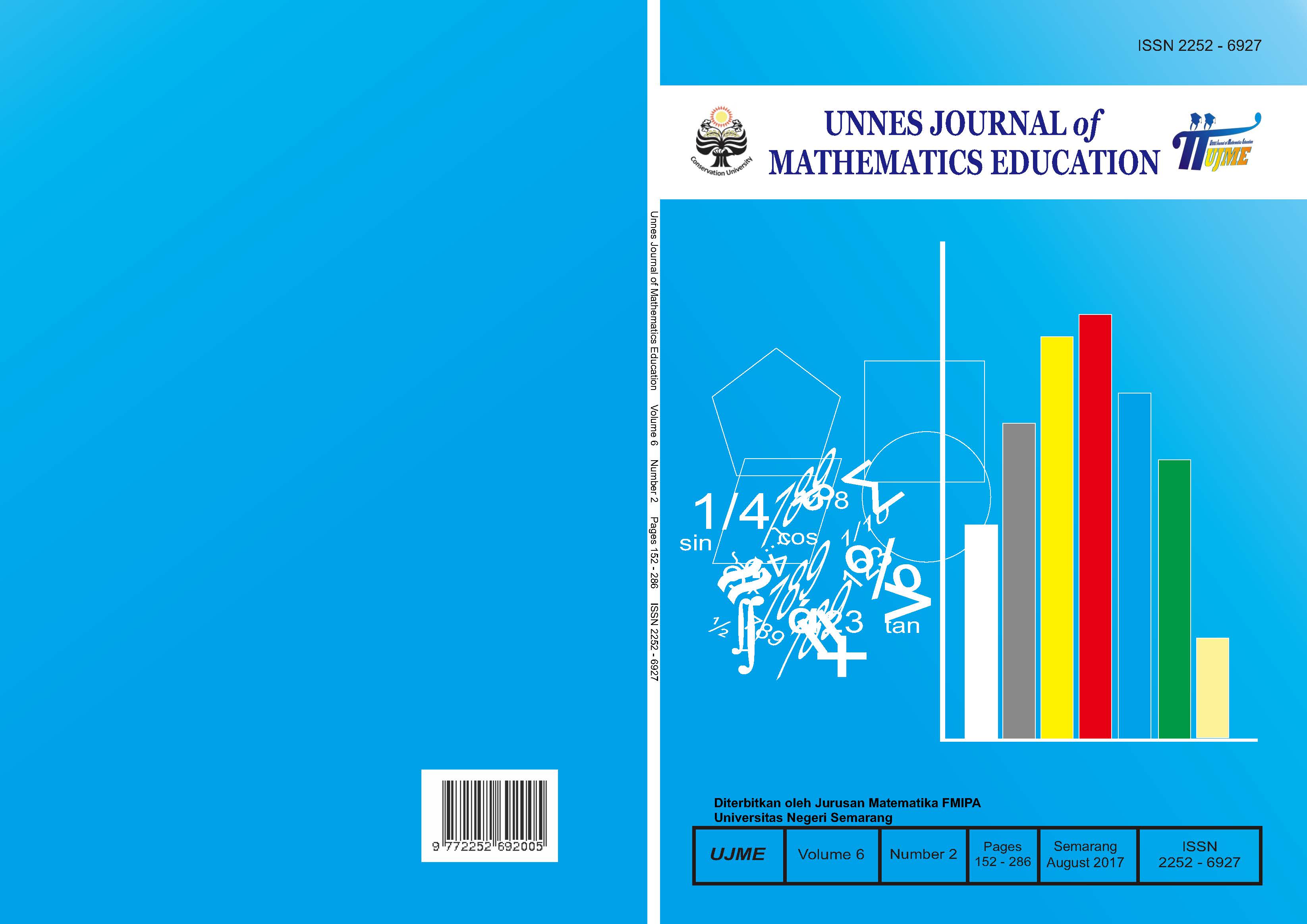The Effectiveness of MURDER Cooperative Model towards Students' Mathematics Reasoning Ability and Self Concept of Ten Grade
##plugins.themes.academic_pro.article.main##
Abstract
The purpose of this research was to know the effectiveness of MURDER cooperative model towards students’ mathematics reasoning ability and self concept of ten grade. Population of this research were students of MIA ten grade Senior High School 1 Kebumen in the academic year 2016/1017. Sampling technique using simple random sampling technique. The data collected by the method of documentation, test methods, observation methods, and questionnaire methods. The analyzed of data are used completeness test and average different test. The results showed that: (1) mathematics reasoning ability of students that following MURDER cooperative model have completed individual and classical study completeness; (2) mathematics reasoning ability of students that following MURDER cooperative model better than mathematics reasoning ability of students that following ekspository learning; (3) self concept of students that following MURDER cooperative model better than self concept of students that following ekspository learning.
##plugins.themes.academic_pro.article.details##
References
Bani, A. (2011). Meningkatkan Kemampuan Pemahaman dan Penalaran Matematik Siswa Sekolah Menengah Pertama Melalui Pembelajaran Penemuan Terbimbing. Jurnal UPI.[Online]. Diakses di http://jurnal. upi. edu. pada, 12.
Berata, I. N., Kusmariyatni, N. N., & Widiana, I. W. (2013). Pengaruh Model Cooperative Learning Type Murder With Metacognitive Scaffolding (CLMMS) Terhadap Hasil Belajar IPA Kelas V SD. MIMBAR PGSD, 1
Darmika, N. K., Suma, K., & Suastra, I. W. (2014). Pengaruh Model Pembelajaran Kooperatif Murder Terhadap Motivasi Belajar dan Prestasi Belajar IPA Siswa SMP. Jurnal Pendidikan IPA, 4(1).
Hasanah, U., Wardono, W., & Kartono, K. (2016). Keefektifan Pembelajaran MURDER Berpendekatan PMRI dengan Asesmen Kinerja Pada Pencapaian Kemampuan Literasi Matematika Siswa SMP Serupa PISA. Unnes Journal of Mathematics Education, 5(2).
Irawan, E. (2012). Efektivitas Teknik Bimbingan Kelompok Untuk Meningkatkan Konsep Diri Remaja (Studi Pre-Eksperimen Pada Siswa Kelas X SMK Yapema Gadingrejo Lampung). PSIKOPEDAGOGIA Jurnal Bimbingan dan Konseling, 2(1), 44-54.
Jubaida, Ana. (2015). Keefektifan Model PBL dengan Teknik Radiant Thinking terhadap Kemampuan Problems Solving dan Kemandirian Siswa pada Pembelajaran Bangun Ruang Kelas VIII. SKRIPSI: FMIPA Universitas Negeri Semarang.
NCTM. (2000). Principles and Standards for School Mathematics. Reston: NCTM.
Riyanto. (2011). Meningkatkan Kemampuan Penalaran dan Prestasi Matematika Dengan Pendekatan Konstruktivisme Pada Siswa Sekolah Menengah Atas. Jurnal Pendidikan Matematika,5(2).
Rosnawati, R. (2013). Kemampuan Penalaran Matematika Siswa SMP Indonesia Pada TIMSS 2011. Yogyakarta: Universitas Negeri Yogyakarta.
Soedjadi. (2000). Kiat Pendidikan Matematika di Indonesia Konstatasi Keadaan Masa Kini Menuju harapan Masa Depan. Jakarta: Depdiknas.
Suherman, E. Turmudi, Suryadi, D., Herman, T., Suhendra, Prabawanto, S., Nurjanah, & Rohayati, A. (2008). Strategi Pembelajaran Matematika Kontemporer. Bandung: Universitas Pendidikan Indonesia
Turmudi. (2008). Landasan Filsafat dan Teori Pembelajaran Matematika (Berparadigma Eksploratif dan Investigatif). Bandung: Lauser Cita Pustaka.
